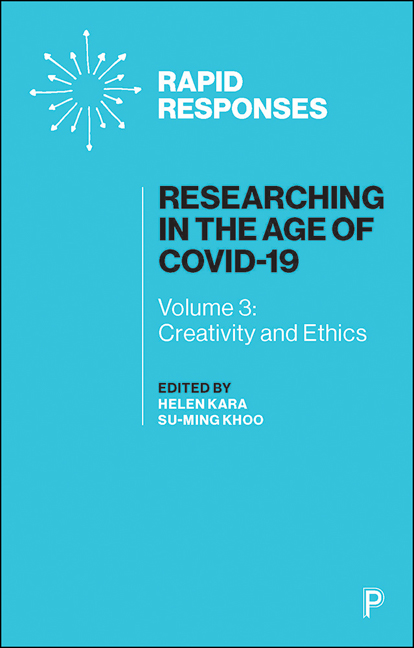9 - Using Photovoice to Explore Students’ Study Practices
Published online by Cambridge University Press: 23 March 2021
Summary
What is photovoice?
Photovoice is a participatory research method. The method asks participants to take photographs of things they associate with and/or practice as part of the community to which they belong, and thus give ‘voice’ to their collective experiences for the purposes of knowledge creation. These photographs can then be used as prompts in individual or group interviews and treated independently as data for visual analysis. In the example described in this chapter, photovoice was utilized as a method to conduct research with postgraduate research students who were working from home during the United Kingdom's COVID-19 lockdown period (data collected in May 2020). The chapter reports on this study and provides practical advice on adopting photovoice as a non-intrusive, time-effective and user-friendly method for collecting data during times of crisis.
The term ‘photovoice’ was coined by health researchers Wang and Burris (1997) to describe the participatory method they adopted for public health research with rural women in China. By giving the women cameras and asking them to photograph their lives, Wang and Burris were able to illuminate the everyday experiences of these village communities as part of a health needs assessment. The images were used to guide group discussions with the women, who worked together to select a body of images that they believed best represented their community and the story they wanted to share. The method therefore ‘entrusts cameras to the hands of people to enable them to act as recorders, and potential catalysts for change, in their own communities’ (Wang and Burris, 1997, p 369). It is the combination of participant-led photography and the potential catalyst for change that sets photovoice apart from other visual methods such as documentary photography or photo elicitation. Photo elicitation, in particular, is a method increasing in use and a term often used interchangeably with photovoice. To clarify, this chapter follows Shaw's (2020) lead in distinguishing photo elicitation as based on a photograph produced by the researcher; rather than photovoice, where the images are produced by the participant.
Co-construction of knowledge is at the heart of photovoice, which is built on foundations of feminist theory and critical pedagogies of co-enquiry (Liebenberg, 2018).
- Type
- Chapter
- Information
- Researching in the Age of COVID-19Volume III: Creativity and Ethics, pp. 93 - 101Publisher: Bristol University PressPrint publication year: 2020
- 1
- Cited by



